
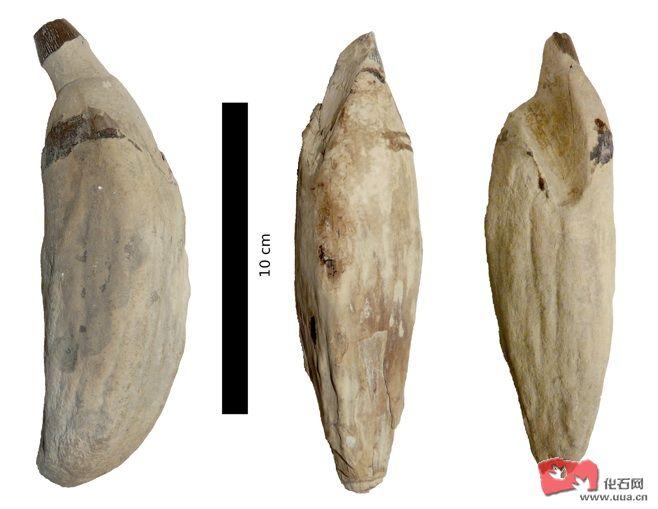
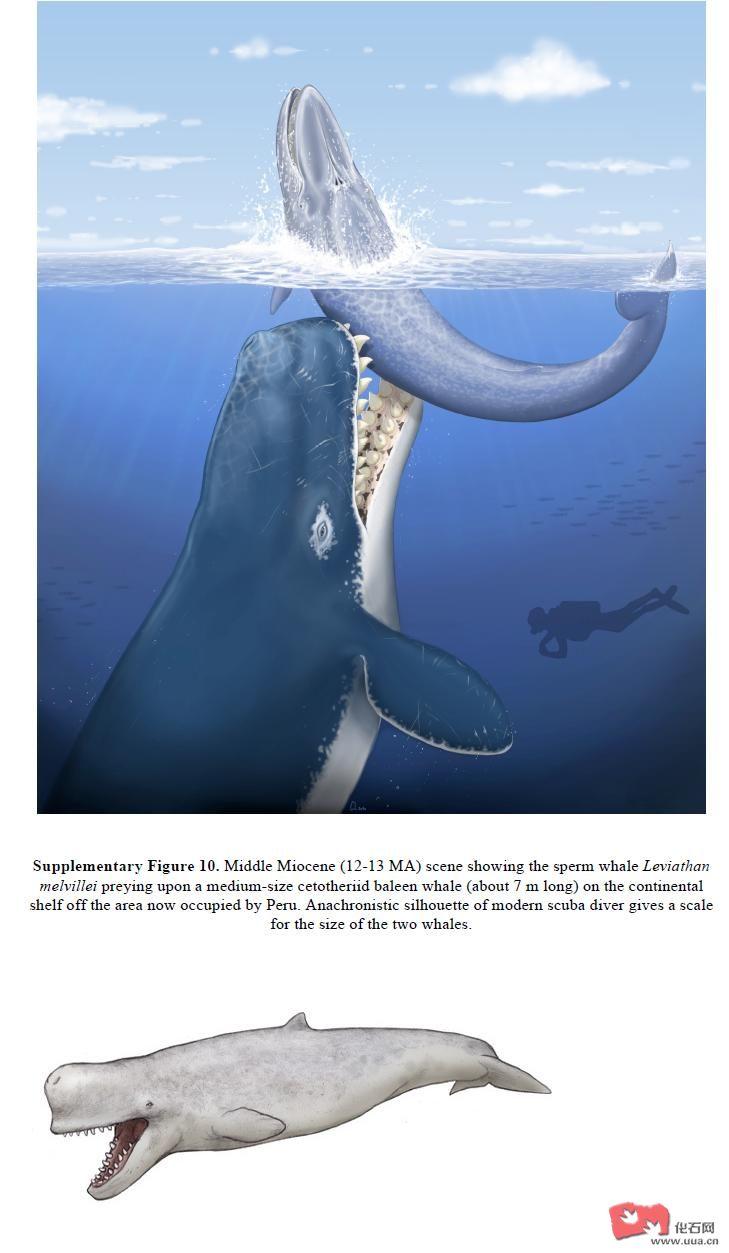
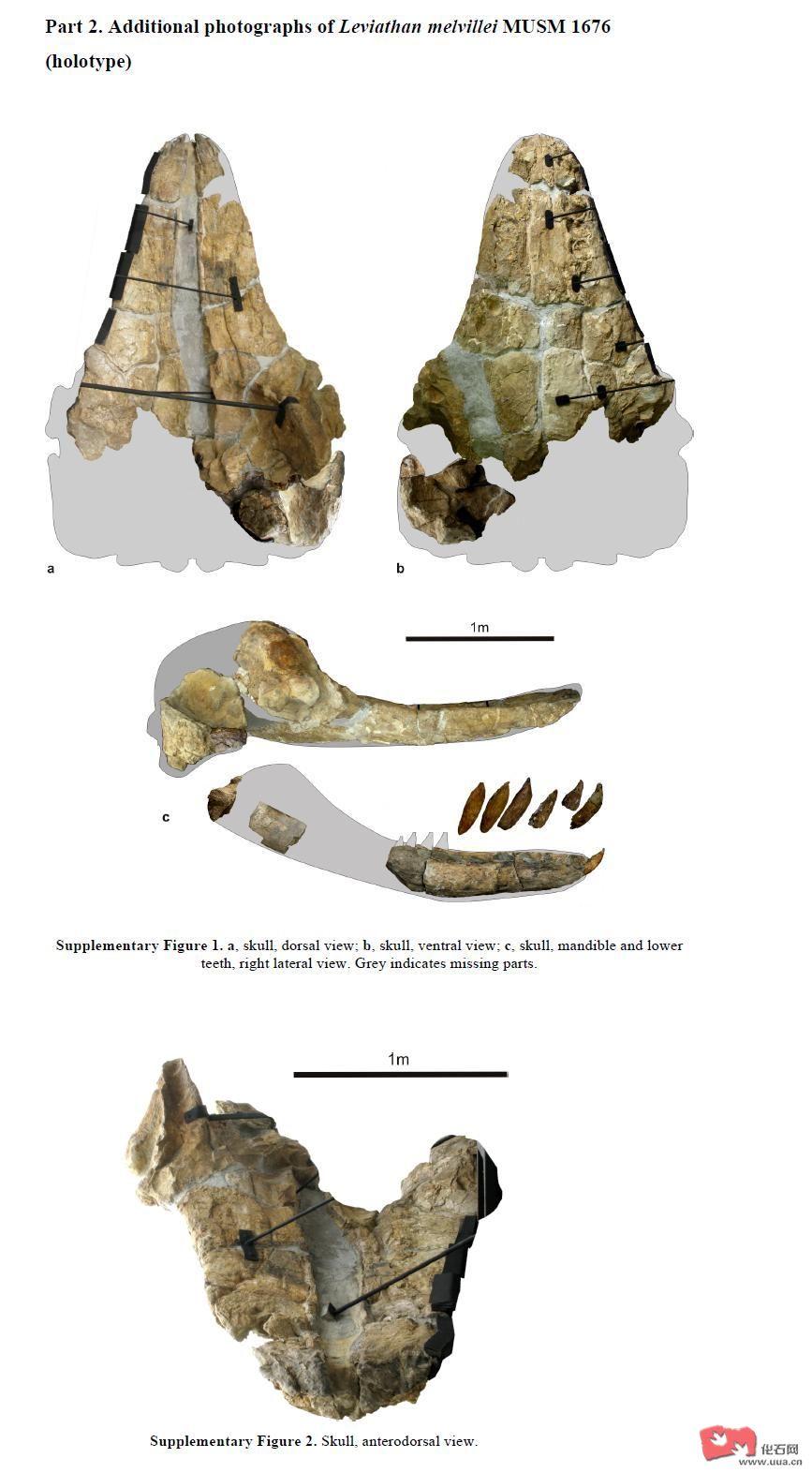
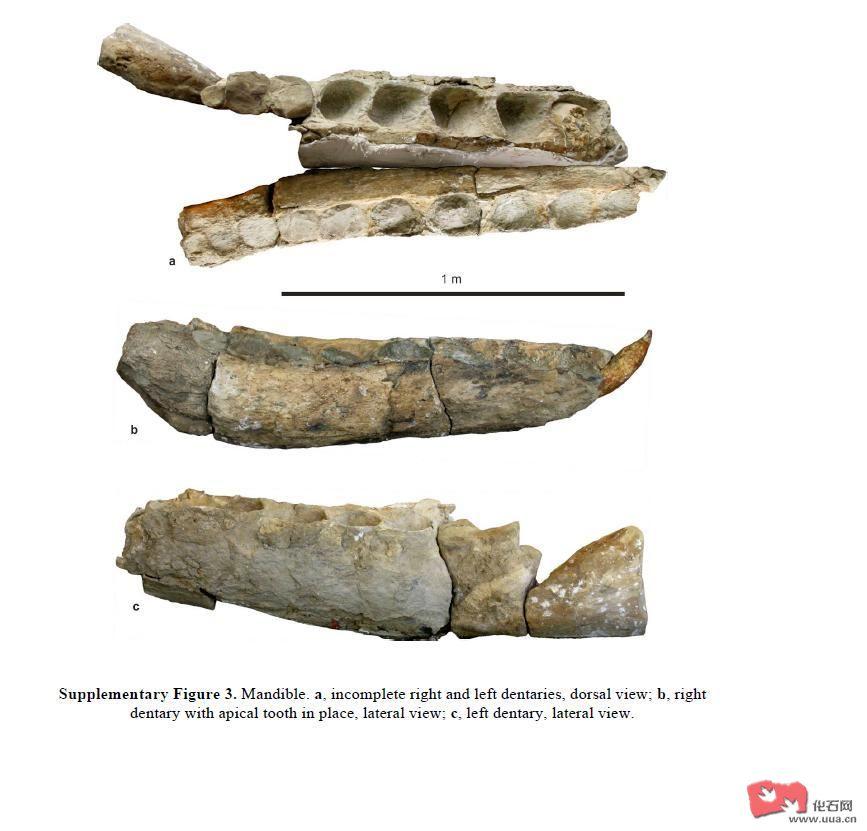
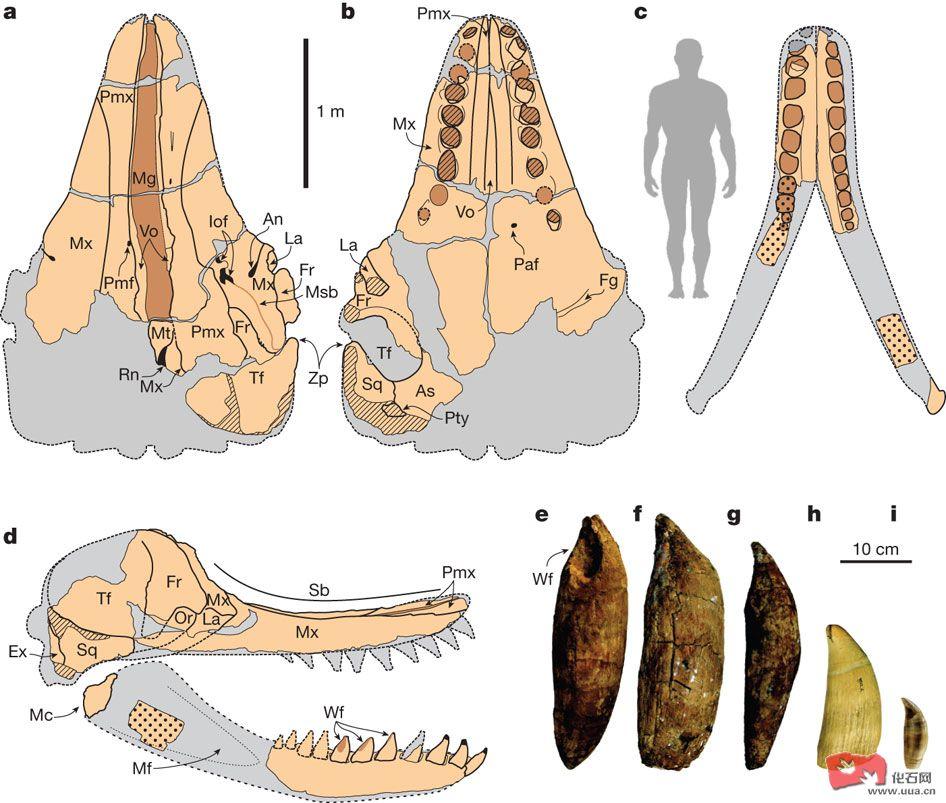
麦尔利维坦鲸/麦尔维尔鲸(Leviathan melvillei)正模标本被发现于秘鲁伊卡沙漠科罗拉多山丘(Cerro Colorado)皮斯科组及Chilcatay组之间 , 化石属中新世中期(1400万年前至1200万年前) , 于当地也发现了其它齿鲸类化石包括簇状马什喙鲸(Messapicetus gregarious)及马泽亚斯短吻河豚(Brachydelphis mazeasi),此外也发现了须鲸类残骸 , 海龟 , 海鸟 ,硬骨鱼类及大型鲨类如宽齿鲭鲨(Cosmopolitodus hastalis)及巨齿鲨(Carcharocles megalodon)等化石。
现存的抹香鲸(Physeter macrocephalus)主要以深海的头足类为食 , 由于缺少上颌的牙齿 , 因此主要以抽吸方式来抓捕猎物 , 相反体型较小的中新世抹香鲸总科属种比如颧突抹香鲸属(Zygophyseter) , 管状鲸属(Acrophyseter) , 奥巴斯托鲸属(Orycterocetus)及阿普里斯小抹香鲸属(Aprixokogia)上下颌均具有牙齿 , 牠们则类似今天的逆戟鲸般迅速抓捕猎物。许多地区都有较大的抹香鲸类牙齿被发现但是大多没有发现颅骨残骸 , 不过麦尔利维坦鲸(Leviathan melvillei)正好提供了史前的大型掠食性抹香鲸类的真正面貌。
麦尔利维坦鲸 (Leviathan melvillei)有部分头骨 , 下颌及牙齿化石发现 , 整个头部长约3米 , 有非常大的上颌及下颌牙齿 , 最大的牙齿长约36厘米及宽达12厘米 , 有粗状的颌骨 , 颞窝(temporal fossa)比今天的抹香鲸要大显示麦尔利维坦鲸 (Leviathan melvillei)有极大的咬合力。由于中新世时期须鲸类迅速分化并且体型开始变大 , 麦尔利维坦鲸 (Leviathan melvillei)被认为会捕食中小型须鲸类 , 牠们甚至和可怕的巨齿鲨(根据新的公式推算最大可达20米)存有激烈的竞争。麦尔利维坦鲸 (Leviathan melvillei) 有广阔的骨盆(supracranial basin )并延至吻突之上 , 这显示牠可能是存有鲸脑油但和深潜或以抽吸方式抓捕猎物没关。
分类上长野鲸属(Brygmophyseter)及颧突抹香鲸属(Zygophyseter)属抹香鲸总科茎层成员(stem physeteroids) , 利维坦鲸属 (Leviathan)的位置还是没定论 , 不过牠看似应该是被放置于小抹香鲸科及抹香鲸科以外的位置。
华路拿颧突抹香鲸(Zygophyseter varolai) 颅长148cm , 颧骨宽度约74.5cm , 全长约650 至 700 cm , 根据现存的抹香鲸 (体长BL 减颅长CBL)和颧骨宽度关系的公式 , 再以华路拿颧突抹香鲸(Zygophyseter varolai)的数据比例来估算 , 麦尔利维坦鲸 (Leviathan melvillei)全长约1621 cm至1753 cm。
Los Angeles -- Paleontologists digging near the coast of Peru have uncovered the largest fossilized skull of a sperm whale ever found.
The 12-million-year-old skull _ which measures nearly 10 feet across _ belonged to a now-extinct genus and species of sperm whale that could have been as much as 57 feet long. The fossil includes the longest documented sperm whale teeth, measuring more than 14 fearsome inches.
The whale, described in a paper published Thursday in the journal Nature, was christened Leviathan melvillei in honor of Moby Dick author Herman Melville.
The creature "was certainly a top predator, probably occupying the same ecological niche of the living killer whale," said Olivier Lambert, one of the study's lead authors and a paleontologist at the National Museum of Natural History in Paris.
Modern sperm whales may grow to about the same size as Leviathan melvillei, but they dive deep into the ocean to feed on squid using suction.
The older whale, on the other hand, may have used its sharp teeth to rip into mid-size baleen whales.
"That's a provocative idea," said Ewan Fordyce, a paleontologist specializing in whales and dolphins at the University of Otago in New Zealand who was not involved in the discovery.
"If that's how it fed, it fed very differently from the modern sperm whale," he said. "It opens our eyes about the diversity of feeding habits."
Lambert said the fossil, which his team uncovered during the last few hours of the final day of digging on a 2008 research field trip, gives researchers a better picture of the diversity of marine mammalian life millions of years ago.
But the reason for their demise remains a mystery. Perhaps their great size became a detriment, he said.
"When you become bigger it becomes difficult to attack smaller animals," he said.
在本文为化石网论坛精华帖,由网友关陇黑獭提供,仅供大家学习参考。
编辑:刘琮滢
